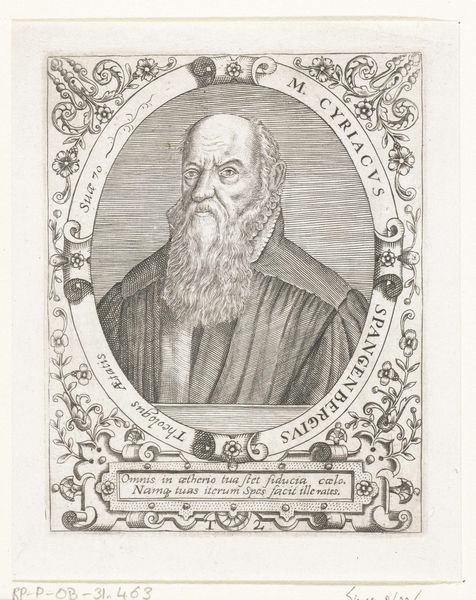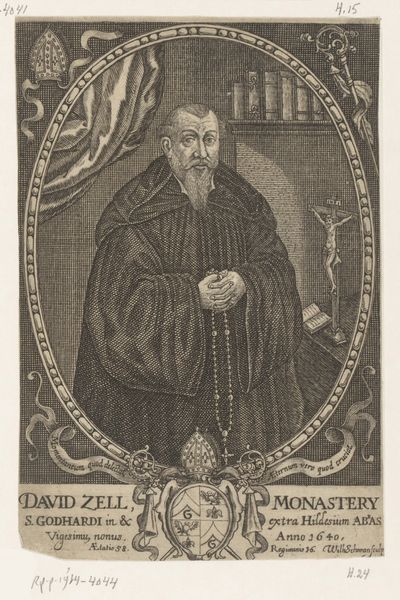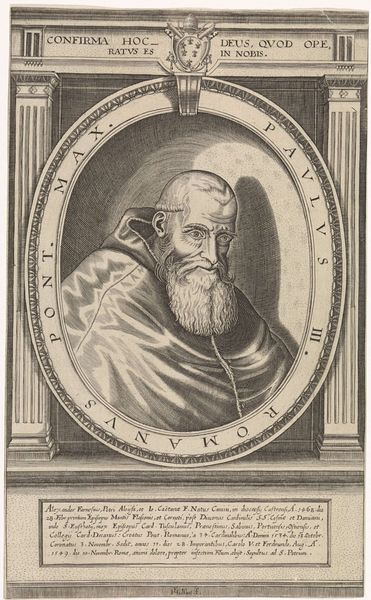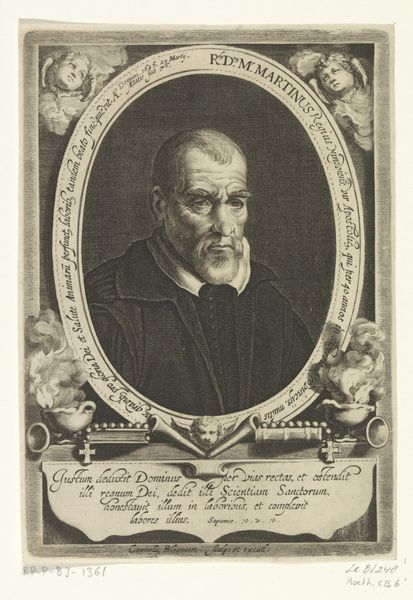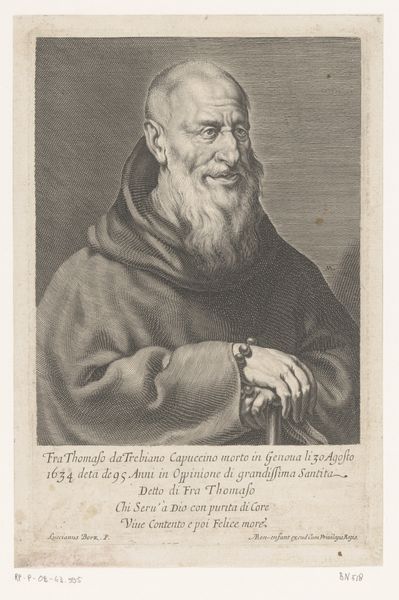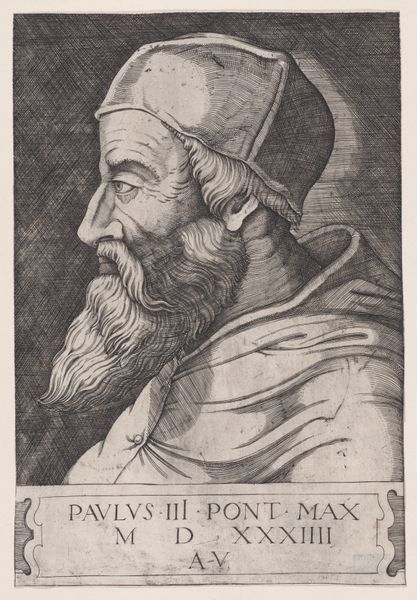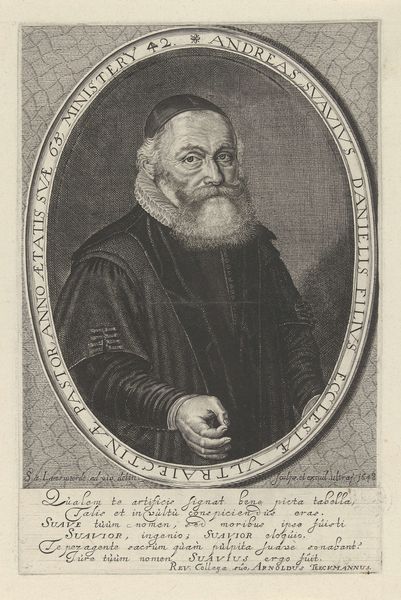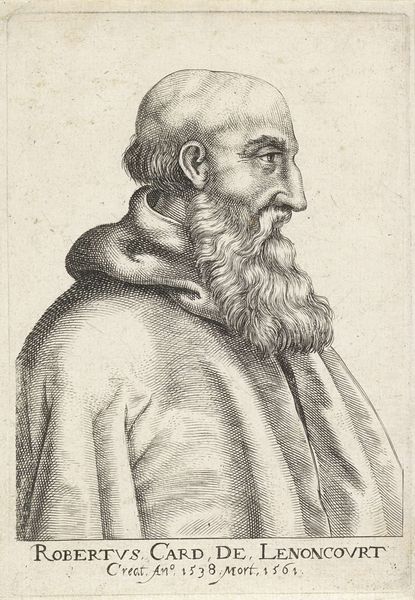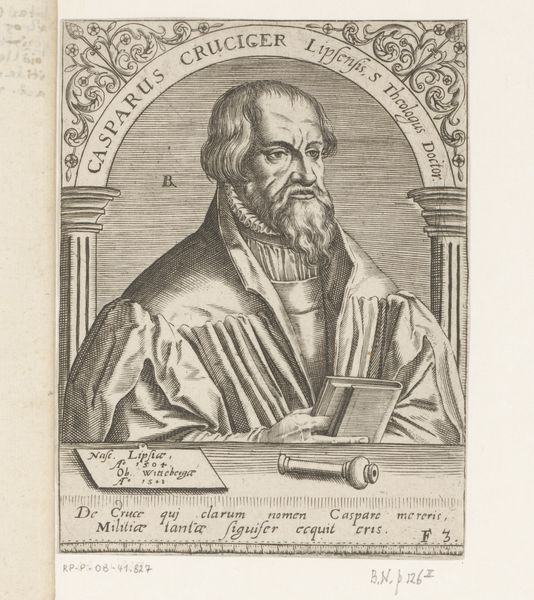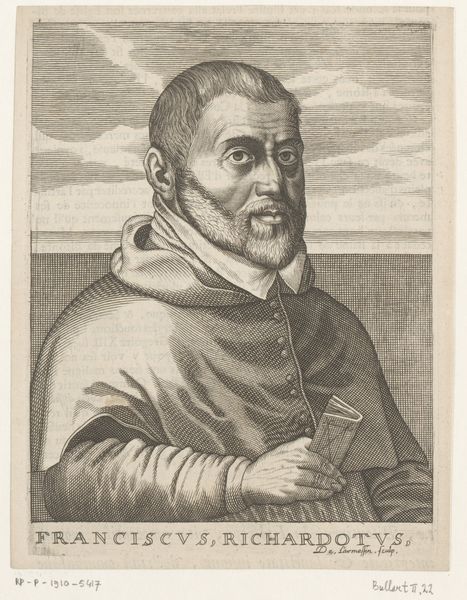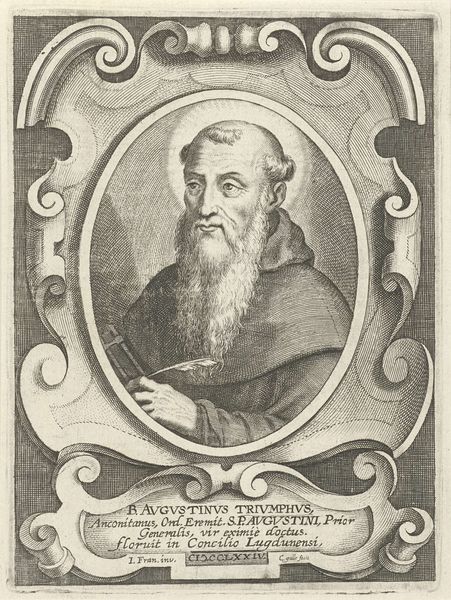
print, engraving
#
portrait
#
baroque
# print
#
caricature
#
line
#
engraving
#
realism
Dimensions: height 128 mm, width 92 mm
Copyright: Rijks Museum: Open Domain
Editor: Here we have "Portret van Oddo degli Oddi," a 1630 print by Jerôme David, currently at the Rijksmuseum. I'm immediately struck by the sheer detail achievable through engraving, but it feels somewhat stiff, almost like a caricature despite the attempt at realism. What do you see in this piece? Curator: My focus immediately settles on the meticulous line work. Note how the artist varies the density and direction of these lines to simulate not only volume but also texture – the wiry beard, the smoothness of the face. Consider the formal device of the oval frame, containing both the sitter's image and accompanying text, itself framed by decorative motifs. What relationship might we posit between these internal and external frames, considered as pure form? Editor: That’s a great point about the frames. It’s like there’s a frame within a frame that reinforces this feeling of being distanced. Would you say this use of the double oval restricts our perspective in some way? Curator: Precisely. It isolates the subject, forcing a concentrated gaze. The stark contrast created by the use of line engraving is significant, devoid of half-tones it favors clarity over painterly illusion. Also consider the lines of the beard are at odds to those of the man's coat. Does the choice for directional contrast indicate the conflict between profession and philosophy? Editor: I never considered that! The contrasting lines add a kind of visual tension. Thanks, I definitely have a better understanding of the structural elements at play here. Curator: Indeed, analyzing these choices reveals how even seemingly simple portraits can become intricate formal exercises.
Comments
No comments
Be the first to comment and join the conversation on the ultimate creative platform.
